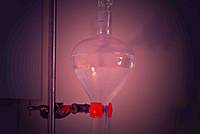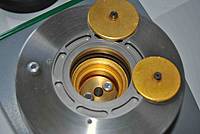
OECD 107, OECD 117 and OECD 123
Partition coefficient (n-octanol/ water)
The partition coefficient, Pow, is defined as the ratio of the equilibrium concentrations of a dissolved substance in a two-phase system consisting of two largely immiscible solvents: n-octanol and water.
It is a key parameter in studies of the environmental fate of chemicals: there is a significant relationship with bioaccumulation in fish, and Pow allows the QSAR evaluation of a wide range of biological effects.
OECD 107 – Shake-flask method
The method is convenient for values in the range between -2 and 5. The two solvents are shaken with the test substance at a concentration not exceeding 0.01 mol/L in any one phase. After centrifuging chemical analysis are performed for the determination of the test substance concentration in each phase.
As an alternative, the OECD 123 method can be used: mixing of the two-phase system is optimized by slow stirring.
OECD 117 – HPLC method
The method is convenient for values in the range between 0 and 6. On commercially available C18 columns, the retention time for a chemical is function of its hydrocarbone/water partition coefficient.
Our company
PHYTOSAFE
2 rue Marx Dormoy
64000 Pau
FRANCE
Tél : +33 (0)5 59 84 79 91
Fax : +33 (0)5 59 84 80 55
Email : contact@phytosafe.com
Terrestrial ecotoxicology
Acute toxicity to earthworms
Our company
PHYTOSAFE
2 rue Marx Dormoy
64000 Pau
FRANCE
Tél : +33 (0)5 59 84 79 91
Fax : +33 (0)5 59 84 80 55
Email : contact@phytosafe.com
